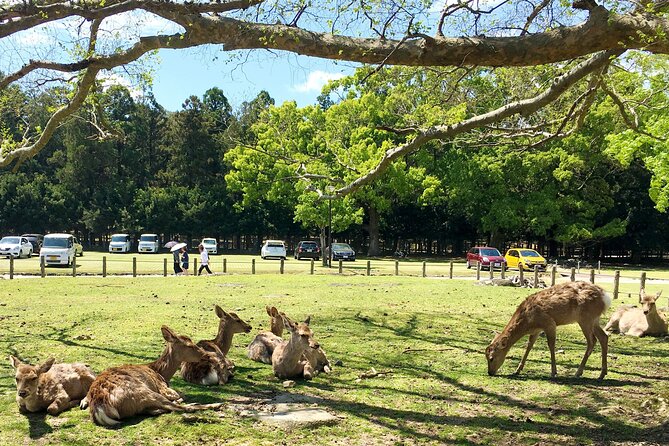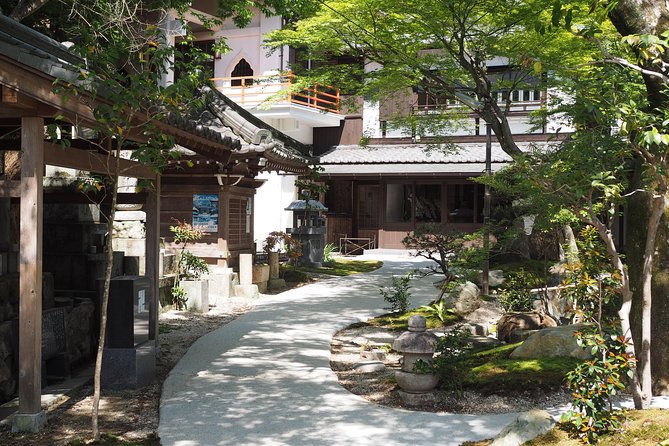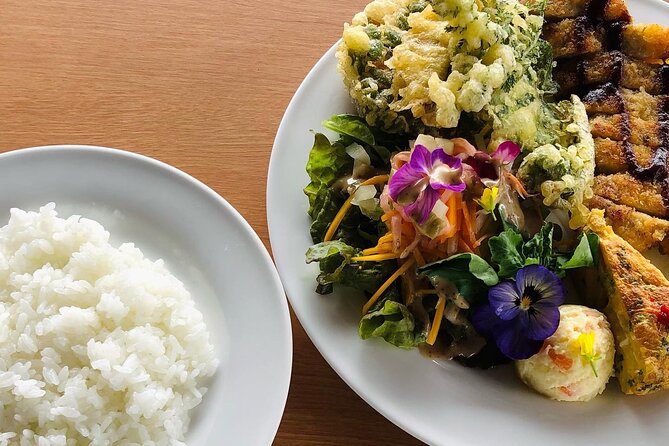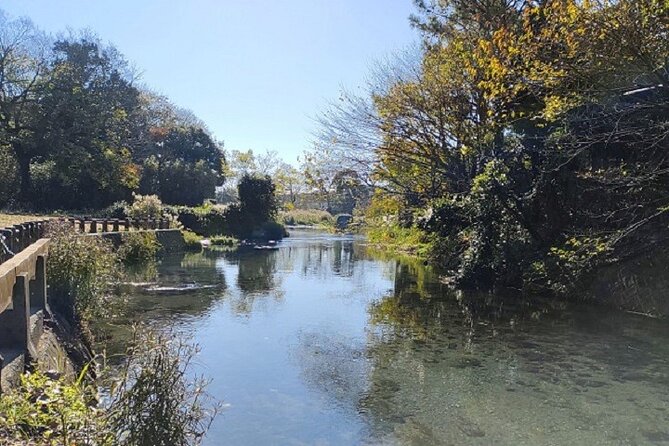As the vermilion torii gates wind their way up the mountainside, beckoning travelers into a realm of ancient spirituality, the allure of Kyoto’s Fushimi Inari-taisha and Kiyomizu-dera is undeniable. Amidst the whispers of history and the rustling of leaves, visitors are transported to a place where time seems to stand still, offering a glimpse into a world where tradition meets tranquility.
But what hidden secrets lie beyond these iconic landmarks, waiting to be uncovered by those who seek a deeper connection with Japan’s cultural tapestry?
Key Takeaways
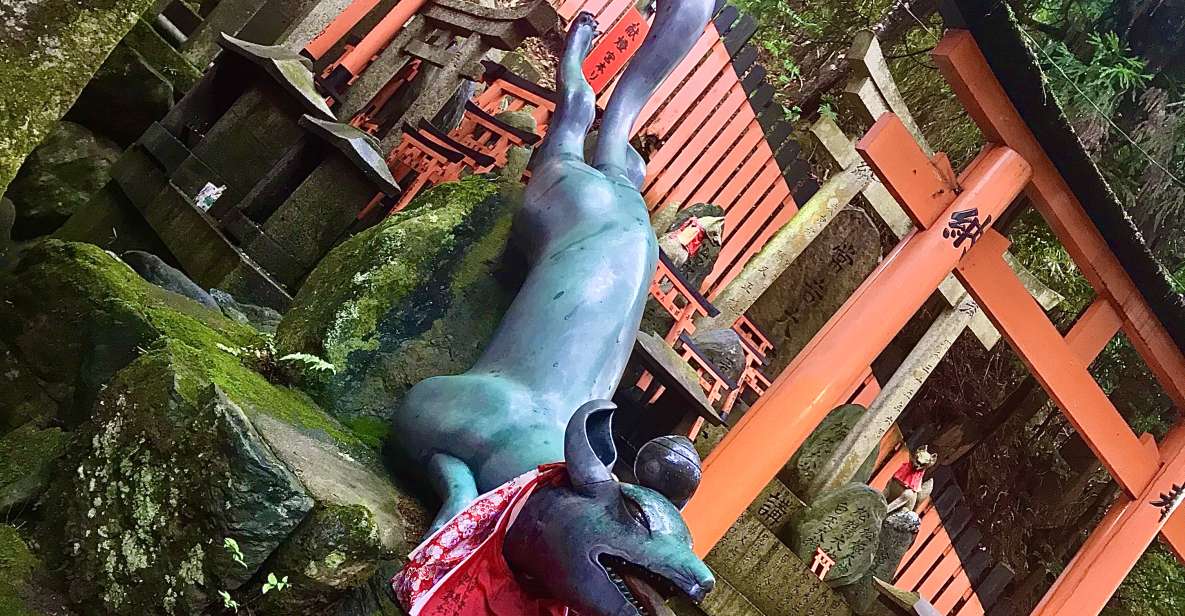
- Experiencias inmersivas en espiritualidad y arquitectura japonesa.
- Sitios históricos y tradiciones culturales en Fushimi Inari-taisha y Kiyomizu-dera.
- Destinos ideales para explorar el patrimonio espiritual y arquitectónico de Japón.
- Transporte eficiente en trenes y flexibilidad con autobuses para explorar Kyoto.
Tour Highlights
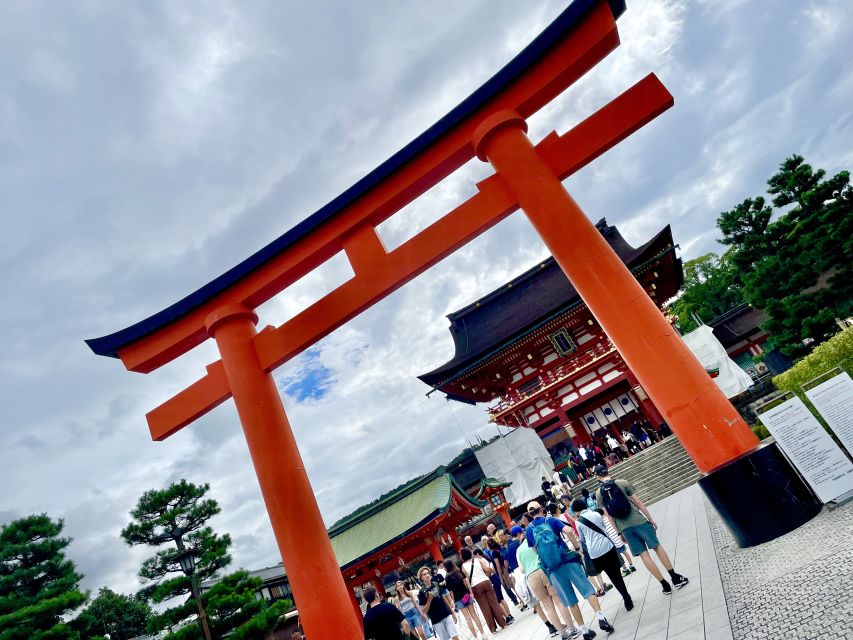
Exploring the vibrant cultural sites of Fushimi Inari-taisha and Kiyomizu-dera offers visitors an immersive journey through the essence of Japanese spirituality and architecture.
At Fushimi Inari-taisha, travelers are greeted by the famous tunnel of torii gates, symbolizing a transition from the mundane to the sacred. This iconic sight is perfect for exploring traditions deeply rooted in Shinto beliefs.
On the other hand, Kiyomizu-dera provides a serene atmosphere where one can immerse themselves in the beauty of Buddhist architecture. Cultural immersion abounds as visitors witness the stunning wooden structure built without the use of nails.
The intricate details and historical significance found at these sites make them must-visit destinations for those seeking to delve into Japan’s rich spiritual and architectural heritage.
Itinerary Details
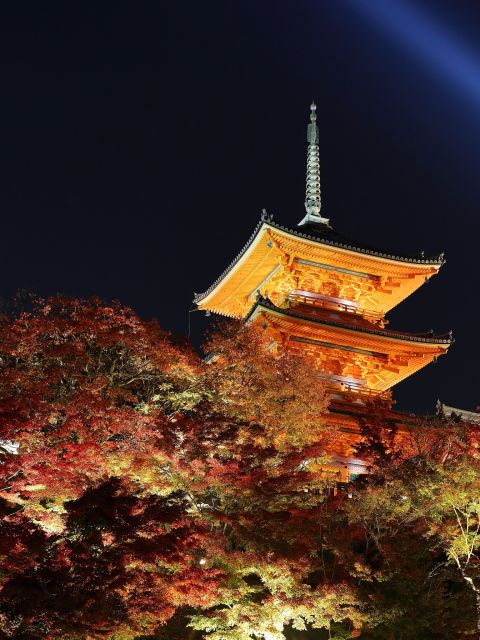
The itinerary details for the tour of Fushimi Inari-taisha and Kiyomizu-dera include stops at key cultural sites and activities in Kyoto. Travelers can expect to explore the vibrant Fushimi Inari Taisha with its iconic torii gates, delve into the historic Pontocho district, visit the serene Otani Hombyo Temple and its cemetery, soak in the beauty of Kiyomizu-dera, and wander the charming streets of Sannenzaka.
Along the way, tour participants will gain cultural insights into the blend of Shintoism and Buddhism present in these sites. Food recommendations will expose visitors to local delicacies like matcha-flavored treats and traditional Kyoto cuisine, adding a flavorful touch to this enriching experience.
Transportation Options
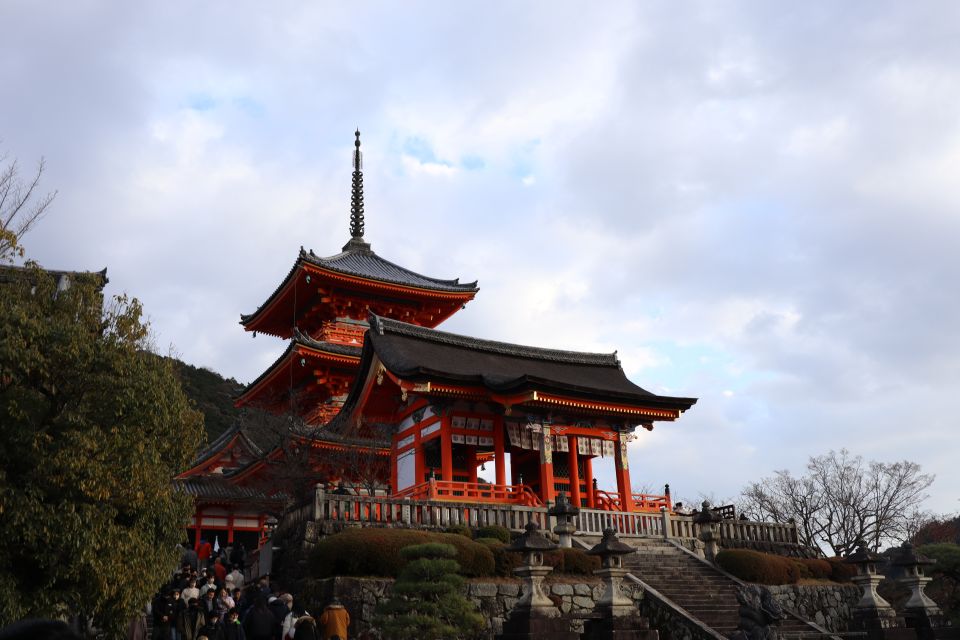
Travelers embarking on the tour of Fushimi Inari-taisha and Kiyomizu-dera in Kyoto have convenient transportation options available for exploring the vibrant cultural sites.
The most common and efficient way to reach these attractions is by train. From the starting point at Fushimi-Inari Station, visitors can easily catch a train to Kiyomizu-dera, which offers a comfortable and scenic journey through Kyoto.
Additionally, buses are another convenient option for those looking to explore the city at their own pace. These buses provide easy access to various stops along the tour route, allowing travelers to hop on and off as they please.
Inclusions
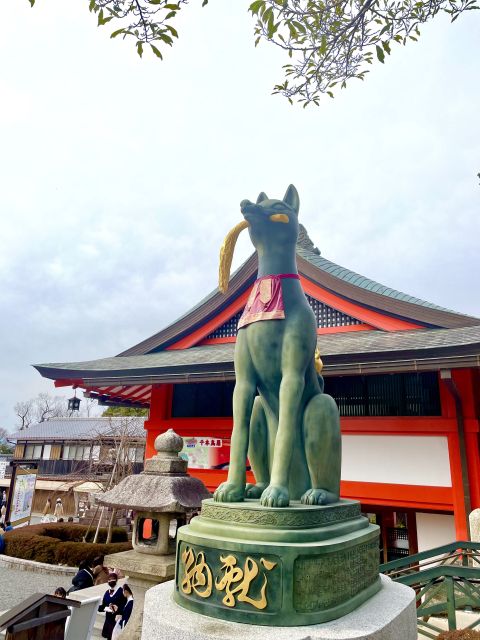
Visitors on the tour of Fushimi Inari-taisha and Kiyomizu-dera in Kyoto can enjoy guided tours, a Kiyomizudera entrance ticket, and transportation from Fushimi-Inari to Kiyomizudera as part of the inclusions. These inclusions provide a seamless experience for exploring these iconic sites.
The guided tours offer cultural insights into the significance of the thousands of torii gates at Fushimi Inari and the majestic Kiyomizudera Temple. By including the Kiyomizudera entrance ticket, visitors can delve into the historical significance of this renowned temple.
Lastly, the transportation from Fushimi-Inari to Kiyomizudera ensures that travelers can easily move between these two must-visit locations, enhancing their overall understanding of Kyoto’s rich cultural and historical heritage.
Important Information
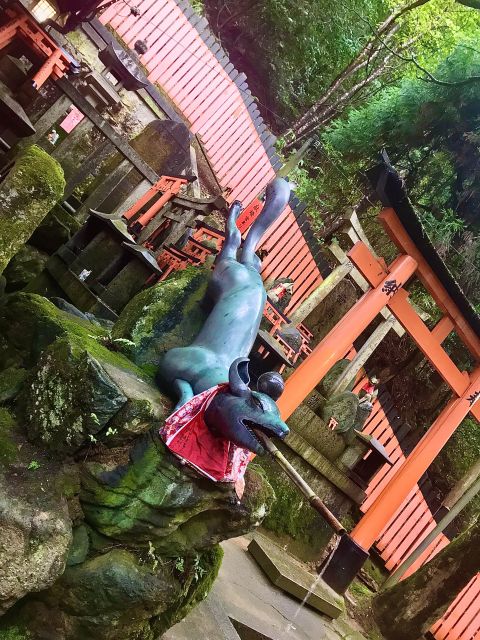
What’re the essential requirements for participants on the Fushimi Inari-taisha and Kiyomizu-dera tour?
When joining this tour, it’s crucial to wear comfortable attire and shoes. The tour involves moderate physical exertion, including climbing trails and stairs. Therefore, participants should be prepared for some walking and hiking.
It’s recommended to dress in layers suitable for the weather and wear sturdy footwear to ensure a pleasant experience exploring both Fushimi Inari-taisha and Kiyomizu-dera. Individuals with mobility impairments may find the tour challenging due to the nature of the sites visited.
Booking Details
For booking this tour to Fushimi Inari-taisha and Kiyomizu-dera, visitors can reserve their spot online and enjoy a guided experience through these iconic Kyoto sites. The tour offers flexible payment options, including credit card and PayPal, making it convenient for travelers. Moreover, group discounts are available for those who book together, providing a cost-effective way to explore these cultural landmarks. By booking in advance, visitors secure their spots for this 7-hour adventure, immersing themselves in the beauty and history of Fushimi Inari-taisha and Kiyomizu-dera. The tour also includes a knowledgeable guide, making the experience both educational and enjoyable.
| Booking Information | |
|---|---|
| Payment Options | Credit Card, PayPal |
| Group Discounts | Available for bookings together |
| Cancellation | Free up to 24 hours prior |
Directions
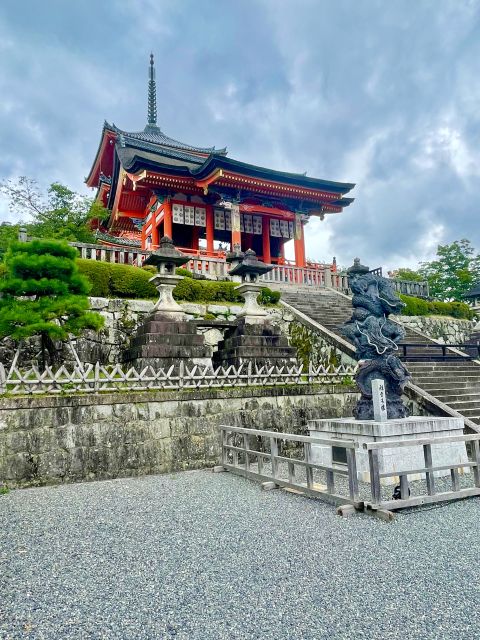
To reach Fushimi Inari-taisha and Kiyomizu-dera, follow the path from Fushimi-Inari Station and venture through the vibrant streets of Kyoto. The route is well-marked, but getting lost can add a sense of adventure to the journey.
Embrace the local cuisine along the way, as Kyoto offers a plethora of culinary delights to refuel your exploration. From street food stalls to cozy traditional restaurants, there’s something for every taste bud.
As you navigate towards these iconic landmarks, don’t hesitate to ask friendly locals for directions or recommendations on where to grab a bite. Immerse yourself in the sights, sounds, and flavors of Kyoto as you make your way to Fushimi Inari-taisha and Kiyomizu-dera.
Frequently Asked Questions
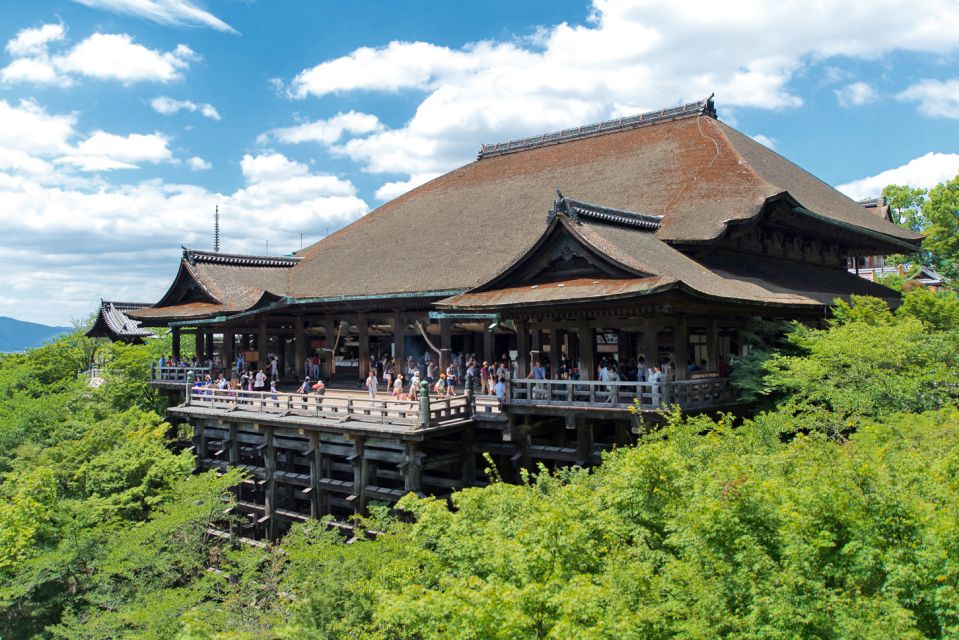
What Are Some Recommended Local Restaurants or Food Stalls Near Fushimi Inari-Taisha and Kiyomizu-Dera for a Quick Bite to Eat?
For a quick bite near Fushimi Inari-taisha and Kiyomizu-dera, visitors can grab local snacks at nearby food stalls. They can also explore traditional crafts in the area, offering a taste of local culture and flavors.
Are There Any Traditional Cultural Activities or Experiences Available to Participate in at Either Fushimi Inari-Taisha or Kiyomizu-Dera?
Traditional workshops and cultural experiences can be enjoyed at both Fushimi Inari-taisha and Kiyomizu-dera. Visitors have the opportunity to engage in hands-on activities like calligraphy, tea ceremonies, or even traditional crafts to immerse themselves in Japanese culture.
Is There a Particular Time of Day That Is Best to Visit Fushimi Inari-Taisha or Kiyomizu-Dera to Avoid Crowds?
The best time to visit Fushimi Inari-taisha or Kiyomizu-dera to avoid crowds is early morning. This time offers the best lighting and a serene atmosphere for a peaceful experience among the beautiful sights.
Are There Any Nearby Souvenir Shops or Markets Where Visitors Can Purchase Unique Gifts or Mementos?
Visitors exploring the area near Fushimi Inari-taisha and Kiyomizu-dera in Kyoto can find unique gifts and mementos in nearby souvenir shops. These shops offer a variety of local crafts and artisanal products for purchase.
Can Visitors Take Photos or Videos Inside the Main Buildings or Shrines at Fushimi Inari-Taisha and Kiyomizu-Dera?
Visitors should follow etiquette guidelines when taking photos or videos inside the main buildings or shrines at Fushimi Inari-taisha and Kiyomizu-dera. Respecting cultural preservation, it’s essential to be mindful of the sacredness of these sites while capturing memories.
Conclusion
In conclusion, the tour of Fushimi Inari-taisha and Kiyomizu-dera with Spanish-speaking guides offers a truly immersive experience into Kyoto’s cultural and spiritual heritage.
With a blend of sightseeing, walking, and hiking, visitors will create unforgettable memories exploring these iconic landmarks.
From the vibrant Fushimi-Inari Station to the serene Kiyomizu-dera Temple, this journey promises to captivate and inspire all who embark on it.
Don’t miss out on this enchanting adventure in Kyoto!

